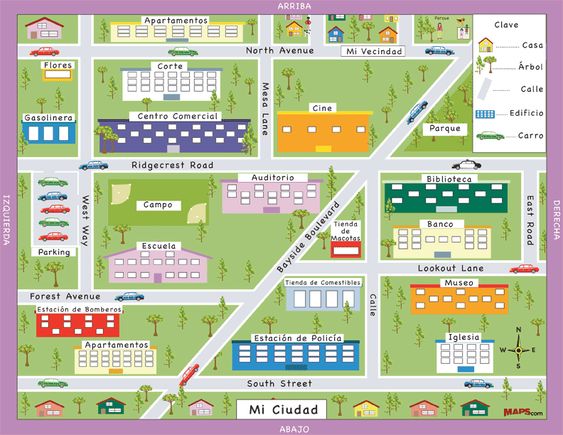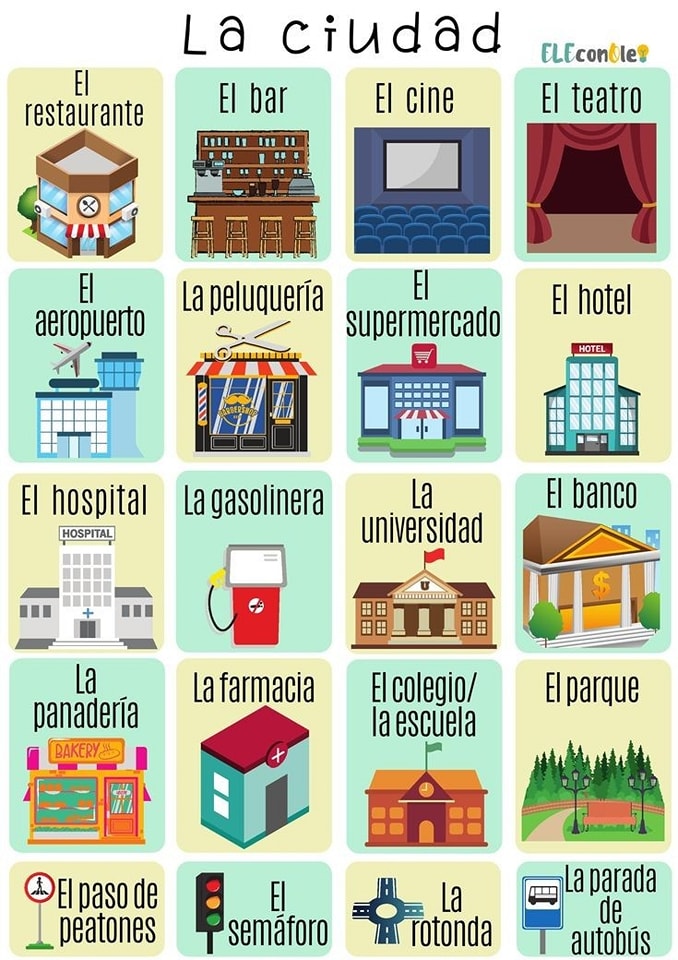


UPDATE! SEE LAST ACTIVITY LINK: REQUIRED FOR ALL STUDENTS: Updated Course Policy Affirmation
Semana 14
Español I
1. Complete the question words practice activity. [See notes at bottom of page if needed.]
2. Complete the places around town I activity. [See notes at bottom of page if needed.]
3. Practice the game for Pobre Ana, Capítulo 3, (Poor Ana, Chapter 3). You need to be sure to log in to the game. Game time should last a minimum of three minutes.
4. Read Chapter 3 of Pobre Ana. [See book and dictionary at bottom of page if needed.]
5. Answer the questions on chapter 3 of Pobre Ana.
6. Review ser in the present tense. [See notes at the bottom of page if needed.]
7. Review estar in the present tense. [See notes at the bottom of page is needed.]
8. Complete the prepositions review games 1 and 2. [See notes at the bottom of page is needed.]
9. Complete the ser vs. estar present tense activity. [See notes at the bottom of page is needed.]
10. Complete Unit 1 in Duolingo (Seven sections - due December 15)
11. UPDATE! SEE LAST ACTIVITY LINK: REQUIRED FOR ALL STUDENTS: Updated Course Policy Affirmation
Español II
1. Complete the question words practice activity. [See notes at bottom of page if needed.]
2. Complete the places around town I activity. [See notes at bottom of page if needed.]
3. Practice the game for Pobre Ana, Capítulo 3, (Poor Ana, Chapter 3).You need to be sure to log in to the game. Game time should last a minimum of three minutes.
4. Read Chapter 3 of Pobre Ana. [See book and dictionary at bottom of page if needed.]
5. Answer the questions on chapter 3 of Pobre Ana.
6. Review ser in the present tense. [See notes at the bottom of page if needed.]
7. Review estar in the present tense. [See notes at the bottom of page is needed.]
8. Complete the ser vs. estar present tense activity. [See notes at the bottom of page is needed.]
9. Complete the prepositions review games 1 and 2. [See notes at the bottom of page is needed.]
10. Complete the ser vs. estar preterite activity. [See notes at the bottom of page is needed.]
11. Complete Unit 1 in Duolingo (Seven sections - Due Nov 17) Unit 2 due December 15
12. UPDATE! SEE LAST ACTIVITY LINK: REQUIRED FOR ALL STUDENTS: Updated Course Policy Affirmation
Ser vs. Estar - These are very common irregular verbs, and they both mean, "to be."
SER is used for identity, professions, nationalities, place of origin, religions, physical appearance, personality, relationships, time, place & date of an event, origin, possession, materials, quantity, price, with passive voice (ser + participle + por), impersonal expressions.
Examples:
Yo soy de Summerville.
Son las dos y media.
Es mi hermana.
Su pelo es largo.
Los estudiantes son inteligentes.
ESTAR is used for location, temporary mental & physical conditions, temporary traits or qualities, a temporary situation with "de", with -ando/-iendo in the progressive tenses.
Examples:
Estoy bien.
¿Estás cansado?
La escuela está en Summerville.
Estamos comiendo.* - This is a different kind of present tense. It is called the present progressive, as it is happening, "right now." You might notice how the second verb is a form of, "comer." The present indicative that we have already learned means, "eat/s."(In this case, the form would be, "comemos." It can also mean, "is/are eating," but this new form with, "estar," only means, "is/are eating," and it emphasizes that is is happening right now."
**For Spanish II, you can also have the past progressive in Spanish, e.g., We were eating, but you will NOT use the preterite form of estar to create this tense.**
See the conjugation notes at the bottom of the page to complete the practice activities.
Return to Main Assignments Page
|
|